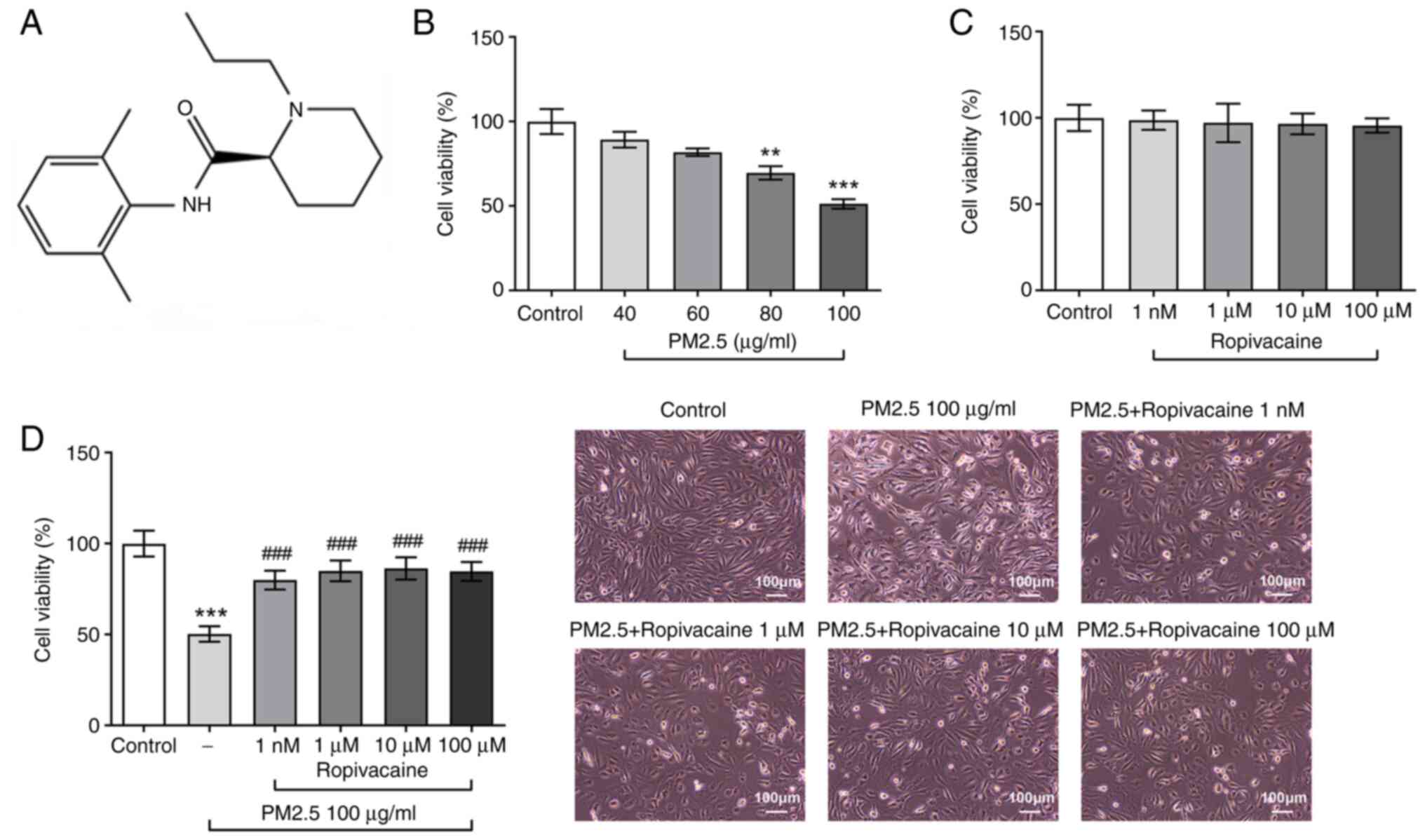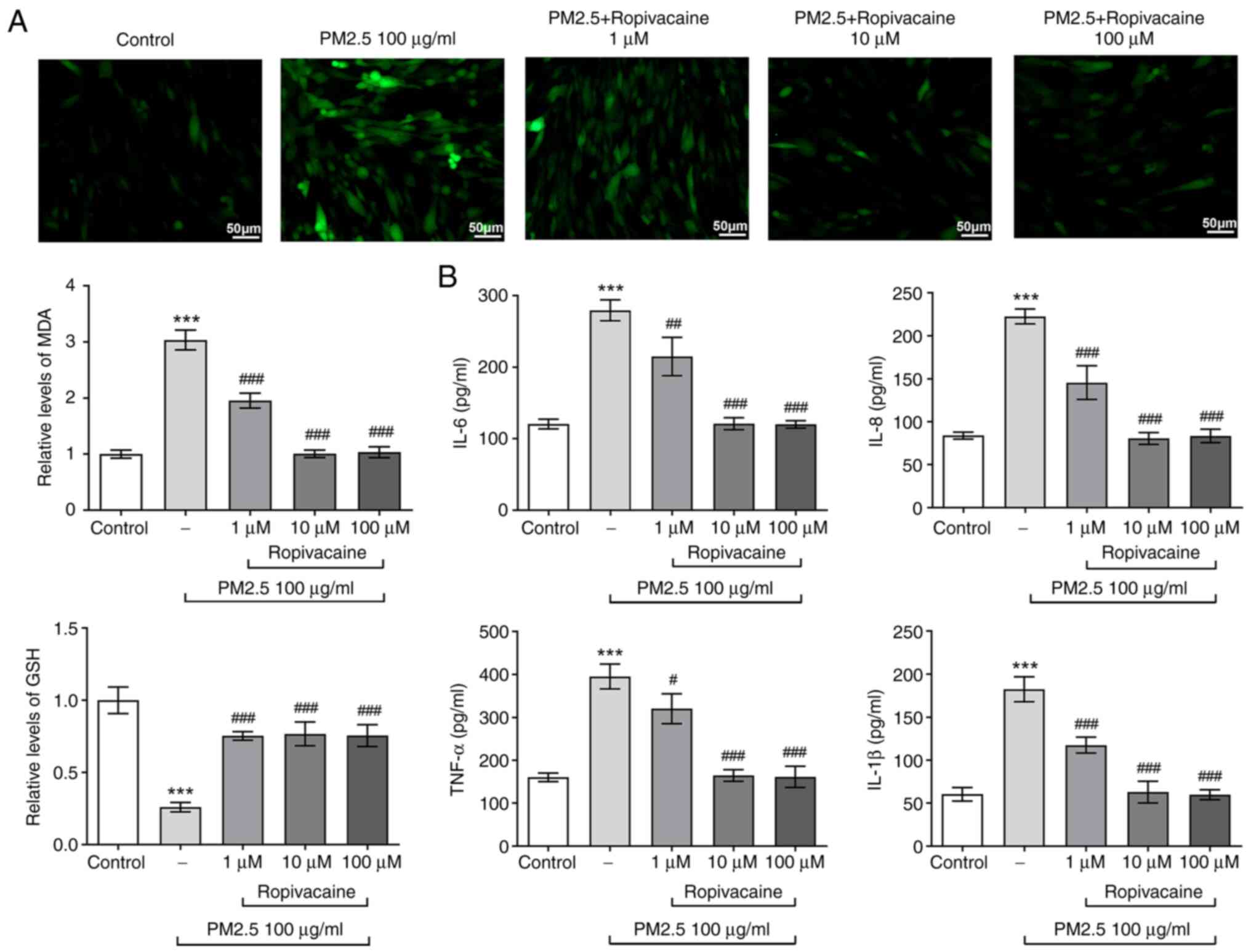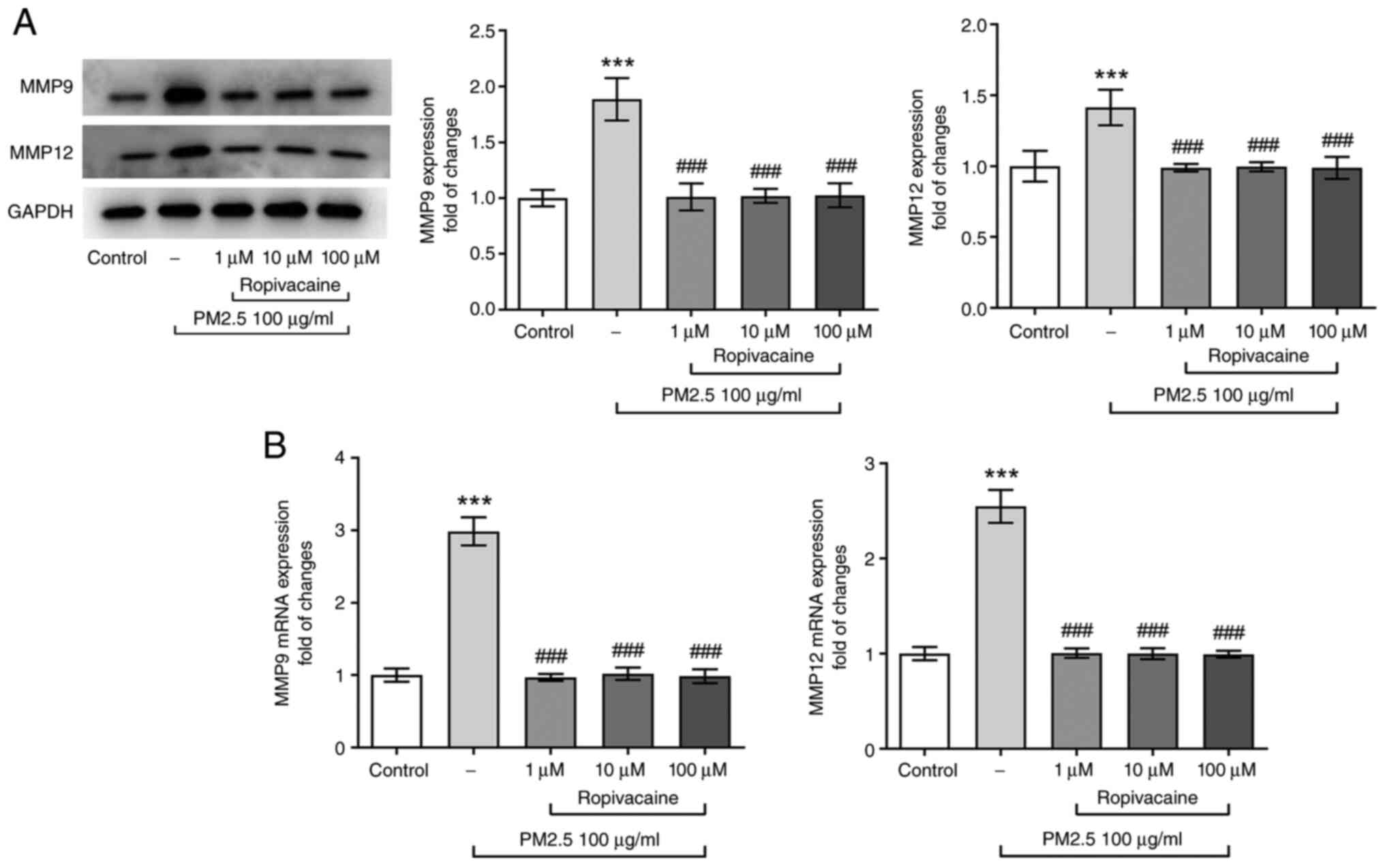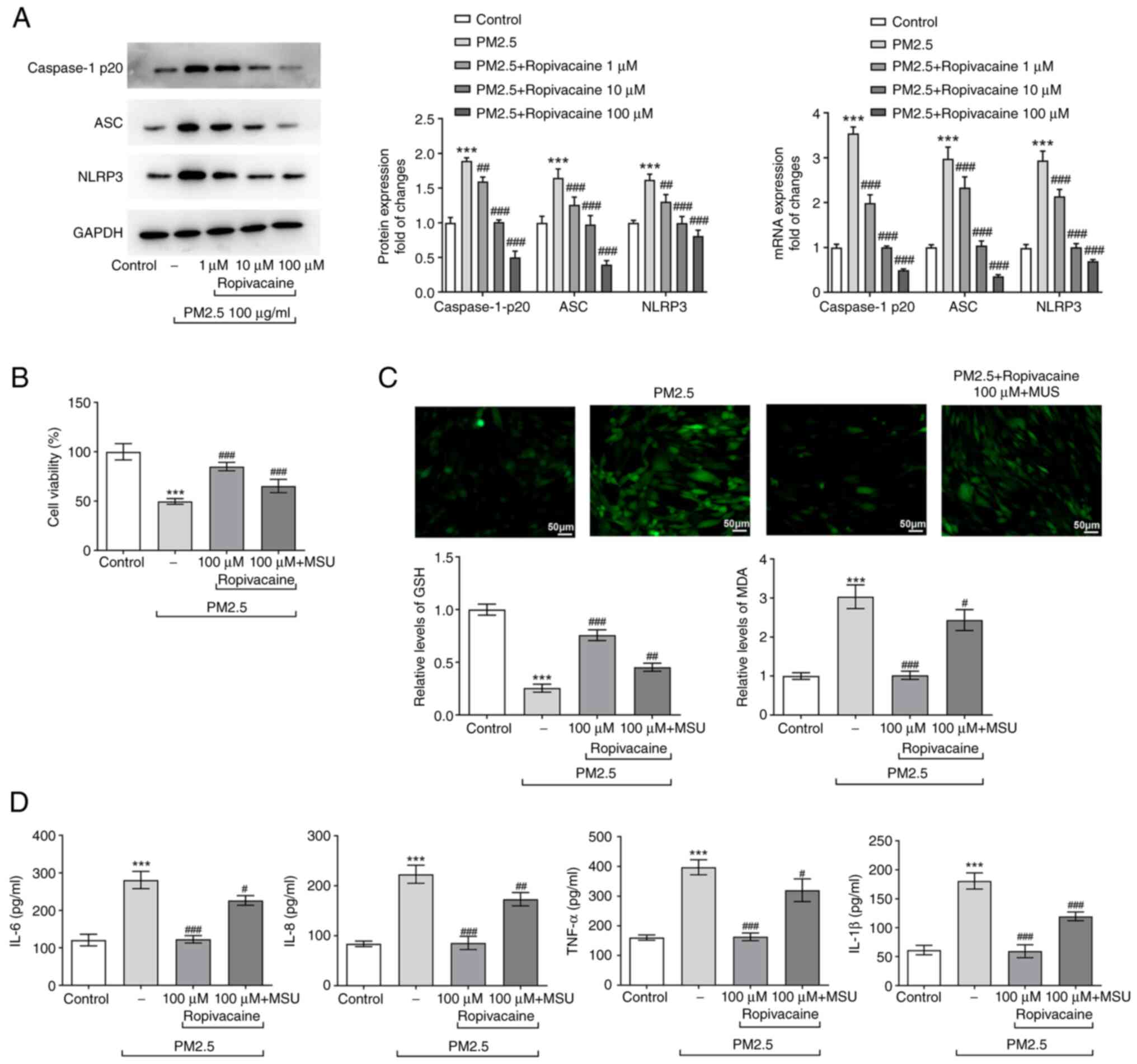|
1
|
Kumar V: Pulmonary innate immune response
determines the outcome of inflammation during pneumonia and
sepsis-associated acute lung injury. Front Immunol.
11(1722)2020.PubMed/NCBI View Article : Google Scholar
|
|
2
|
Rezoagli E, Fumagalli R and Bellani G:
Definition and epidemiology of acute respiratory distress syndrome.
Ann Transl Med. 5(282)2017.PubMed/NCBI View Article : Google Scholar
|
|
3
|
Zeng M, Sang W, Chen S, Chen R, Zhang H,
Xue F, Li Z, Liu Y, Gong Y, Zhang H and Kong X: 4-PBA inhibits
LPS-induced inflammation through regulating ER stress and autophagy
in acute lung injury models. Toxicol Lett. 271:26–37.
2017.PubMed/NCBI View Article : Google Scholar
|
|
4
|
Gu LZ, Sun H and Chen JH: Histone
deacetylases 3 deletion restrains PM2.5-induced mice lung injury by
regulating NF-κB and TGF-β/Smad2/3 signaling pathways. Biomed
Pharmacother. 85:756–762. 2017.PubMed/NCBI View Article : Google Scholar
|
|
5
|
Zhou Y, Yang TB, Wei J, Zeng C, Li H, Yang
T and Lei GH: Single-dose intra-articular ropivacaine after
arthroscopic knee surgery decreases post-operative pain without
increasing side effects: A systematic review and meta-analysis.
Knee Surg Sports Traumatol Arthrosc. 24:1651–1659. 2016.PubMed/NCBI View Article : Google Scholar
|
|
6
|
Piegeler T, Schläpfer M, Dull RO, Schwartz
DE, Borgeat A, Minshall RD and Beck-Schimmer B: Clinically relevant
concentrations of lidocaine and ropivacaine inhibit TNFα-induced
invasion of lung adenocarcinoma cells in vitro by blocking the
activation of Akt and focal adhesion kinase. Br J Anaesth.
115:784–791. 2015.PubMed/NCBI View Article : Google Scholar
|
|
7
|
Lv H, Cheng Q, Li Y, Zhang Y, Chen J and
Chen W: The protective effects of ropivacaine against high
glucose-induced brain microvascular endothelial injury by reducing
MMPs and alleviating oxidative stress. Neurotox Res. 39:851–859.
2021.PubMed/NCBI View Article : Google Scholar
|
|
8
|
Patel M, Chignalia AZ, Isbatan A,
Bommakanti N and Dull RO: Ropivacaine inhibits pressure-induced
lung endothelial hyperpermeability in models of acute hypertension.
Life Sci. 222:22–28. 2019.PubMed/NCBI View Article : Google Scholar
|
|
9
|
Wu L, Li L, Wang F, Wu X, Zhao X and Xue
N: Anti-inflammatory effect of local anaesthetic ropivacaine in
lipopolysaccharide-stimulated RAW264.7 macrophages. Pharmacology.
103:228–235. 2019.PubMed/NCBI View Article : Google Scholar
|
|
10
|
Blumenthal S, Borgeat A, Pasch T, Reyes L,
Booy C, Lambert M, Schimmer RC and Beck-Schimmer B: Ropivacaine
decreases inflammation in experimental endotoxin-induced lung
injury. Anesthesiology. 104:961–969. 2006.PubMed/NCBI View Article : Google Scholar
|
|
11
|
Piegeler T, Dull RO, Hu G, Castellon M,
Chignalia AZ, Koshy RG, Votta-Velis EG, Borgeat A, Schwartz DE,
Beck-Schimmer B and Minshall RD: Ropivacaine attenuates endotoxin
plus hyperinflation-mediated acute lung injury via inhibition of
early-onset Src-dependent signaling. BMC Anesthesiol.
14(57)2014.PubMed/NCBI View Article : Google Scholar
|
|
12
|
Schley MT, Casutt M, Haberthür C, Dusch M,
Rukwied R, Schmelz M, Schmeck J, Schüpfer GK and Konrad CJ:
Long-acting local anesthetics attenuate FMLP-induced acute lung
injury in rats. Anesth Analg. 109:880–885. 2009.PubMed/NCBI View Article : Google Scholar
|
|
13
|
Livak KJ and Schmittgen TD: Analysis of
relative gene expression data using real-time quantitative PCR and
the 2(-Delta Delta C(T)) method. Methods. 25:402–408.
2001.PubMed/NCBI View Article : Google Scholar
|
|
14
|
Zou W, Wang X, Hong W, He F, Hu J, Sheng
Q, Zhu T and Ran P: PM2.5 induces the expression of inflammatory
cytokines via the Wnt5a/Ror2 pathway in human bronchial epithelial
cells. Int J Chron Obstruct Pulmon Dis. 15:2653–2662.
2020.PubMed/NCBI View Article : Google Scholar
|
|
15
|
Zhao J, Li M, Wang Z, Chen J, Zhao J, Xu
Y, Wei X, Wang J and Xie J: Role of PM2.5 in the development and
progression of COPD and its mechanisms. Respir Res.
20(120)2019.PubMed/NCBI View Article : Google Scholar
|
|
16
|
Lin CI, Tsai CH, Sun YL, Hsieh WY, Lin YC,
Chen CY and Lin CS: Instillation of particulate matter 2.5 induced
acute lung injury and attenuated the injury recovery in ACE2
knockout mice. Int J Biol Sci. 14:253–265. 2018.PubMed/NCBI View Article : Google Scholar
|
|
17
|
Jia H, Liu Y, Guo D, He W, Zhao L and Xia
S: PM2.5-induced pulmonary inflammation via activating of the
NLRP3/caspase-1 signaling pathway. Environ Toxicol. 36:298–307.
2021.PubMed/NCBI View Article : Google Scholar
|
|
18
|
Huang X, Jiang J, Huang L, Ren Q, Gao X
and Yu S: Ropivacaine prevents the activation of the NLRP3
inflammasome caused by high glucose in HUVECs. ACS Omega.
5:23413–23419. 2020.PubMed/NCBI View Article : Google Scholar
|
|
19
|
Yang L, Liu G and Li X, Xia Z, Wang Y, Lin
W, Zhang W, Zhang W and Li X: Small GTPase RAB6 deficiency promotes
alveolar progenitor cell renewal and attenuates PM2.5-induced lung
injury and fibrosis. Cell Death Dis. 11(827)2020.PubMed/NCBI View Article : Google Scholar
|
|
20
|
Lee FY, Lee MS, Wallace CG, Huang CR, Chu
CH, Wen ZH, Huang JH, Chen XS, Wang CC and Yip HK: Short-interval
exposure to ambient fine particulate matter (PM2.5) exacerbates the
susceptibility of pulmonary damage in setting of lung
ischemia-reperfusion injury in rodent: Pharmacomodulation of
melatonin. Biomed Pharmacother. 113(108737)2019.PubMed/NCBI View Article : Google Scholar
|
|
21
|
Yang J, Chen Y, Yu Z, Ding H and Ma Z: The
influence of PM2.5 on lung injury and cytokines in mice. Exp Ther
Med. 18:2503–2511. 2019.PubMed/NCBI View Article : Google Scholar
|
|
22
|
Greenlee KJ, Werb Z and Kheradmand F:
Matrix metalloproteinases in lung: Multiple, multifarious, and
multifaceted. Physiol Rev. 87:69–98. 2007.PubMed/NCBI View Article : Google Scholar
|
|
23
|
Chen GQ, Benthani FA, Wu J, Liang D, Bian
ZX and Jiang X: Artemisinin compounds sensitize cancer cells to
ferroptosis by regulating iron homeostasis. Cell Death Differ.
27:242–254. 2020.PubMed/NCBI View Article : Google Scholar
|
|
24
|
Zhou Y, Zhang CY, Duan JX, Li Q, Yang HH,
Sun CC, Zhang J, Luo XQ and Liu SK: Vasoactive intestinal peptide
suppresses the NLRP3 inflammasome activation in
lipopolysaccharide-induced acute lung injury mice and macrophages.
Biomed Pharmacother. 121(109596)2020.PubMed/NCBI View Article : Google Scholar
|


















